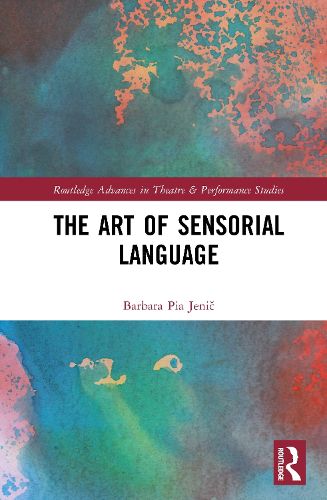Readings Newsletter
Become a Readings Member to make your shopping experience even easier.
Sign in or sign up for free!
You’re not far away from qualifying for FREE standard shipping within Australia
You’ve qualified for FREE standard shipping within Australia
The cart is loading…






The Art of Sensorial Language examines audience interaction, multisensory experiences that can be understood internationally and cross-culturally. It considers interactivity not as a technological mode of interaction but as a direct and immediate communication between the audience and the performers which takes place in person and in which all participants are in contact with each other. By describing theatrical techniques and approaches for organically immersing the audience in the story, the book shows how the development of these methods is also applicable to multisensory presentations for museums and galleries. The author places particular emphasis on the development of scents and their uses for cultural and educational purposes to allow for greater and deeper immersion in an event or installation. Inspired by the work of Enrique Vargas, the inventor of sensorial language, the discussion reveals how this approach not only engages the senses but also integrates additional methods and tools to create a poetic symphony, which is particularly important for enriching user experiences in theatres, galleries and museums, as well as in other forms of immersive experiences.
This study will be of great interest to experts in multisensory approaches within the fields of the arts and education, as well as specialists in cultural heritage and tourism.
$9.00 standard shipping within Australia
FREE standard shipping within Australia for orders over $100.00
Express & International shipping calculated at checkout
The Art of Sensorial Language examines audience interaction, multisensory experiences that can be understood internationally and cross-culturally. It considers interactivity not as a technological mode of interaction but as a direct and immediate communication between the audience and the performers which takes place in person and in which all participants are in contact with each other. By describing theatrical techniques and approaches for organically immersing the audience in the story, the book shows how the development of these methods is also applicable to multisensory presentations for museums and galleries. The author places particular emphasis on the development of scents and their uses for cultural and educational purposes to allow for greater and deeper immersion in an event or installation. Inspired by the work of Enrique Vargas, the inventor of sensorial language, the discussion reveals how this approach not only engages the senses but also integrates additional methods and tools to create a poetic symphony, which is particularly important for enriching user experiences in theatres, galleries and museums, as well as in other forms of immersive experiences.
This study will be of great interest to experts in multisensory approaches within the fields of the arts and education, as well as specialists in cultural heritage and tourism.